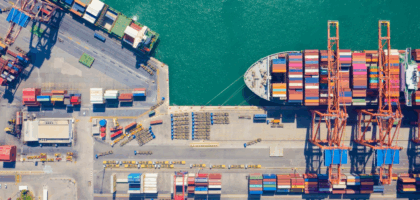If you’ve been shipping internationally for longer than a year, you have probably encountered the impacts on the global supply chain during the Chinese New Year. And with COVID thrown in the mix, the impact will be even more apparent this year.
What exactly is the Chinese New Year?
Arguably the most important holiday throughout China and Southeast Asia, the Chinese New Year—also known as the Lunar New Year—is a spring festival that marks the beginning of the traditional Chinese calendar. This year, it starts on Tuesday, February 1st, which is earlier than 2021 when the new year didn’t begin until February 12th.
The holiday officially lasts for 7 days, starting January 31st until February 6th, but most people in China celebrate for up to two weeks.
What does this mean for shipping?
Because many people take extra time off work to celebrate and travel with family or return to their hometowns, many businesses in the region shut down completely. This results in a longer production halt and longer delays at the ports. This year, COVID safety restrictions and other measures being taken to try and mitigate further spreading of the virus could prevent some workers from returning earlier to their jobs, causing even further delays.
On top of the delays that are seen in global logistics and production time, shipping costs also increase the closer you get to the Chinese New Year—which, obviously has been the norm for the last 12+ months with skyrocketing freight charges. You can expect the last week of January to see the highest shipping costs into or out of the region.
How can you plan for this holiday in your supply chain strategy?
If you import or export a fair share of freight into or out of the region, the key to a successful supply chain is proper planning, coordination, and communication. According to the United Nations Statistics Division, roughly 28% of global manufacturing output is tied to China. This means the shutdown of businesses in the region will have a significant impact on your supply chain and cause a ripple effect of possible consequences, including long transit times, flight cancellations, backorders, and blank sailings.
Here are some ways to prepare and plan ahead for this holiday:
1. Book your shipments early.
If you know you need something to be shipped into or out of the region, book as early as possible. With COVID in the mix, it could take weeks to get your shipment where it needs to be (especially depending on the mode you are using and the current capacity status). In addition, if you have production that is housed in China, confirm with your supplier when they halt production and start accepting new orders.
2. Inform your forwarder about your priority shipments.
Talk to your freight forwarder and discuss all your high-priority shipping needs upfront. Letting them know what is most important will help them prioritize what they need to get working on right away in order to secure space.
3. Build up adequate inventory.
Having enough inventory for your business when your production is set in this region is crucial during this time. Production can be halted 1-2 weeks prior to the holiday and at least two weeks after. That doesn’t include the month or more it may take for operations to get back to normal after the Chinese New Year.
4. Communicate, communicate, communicate.
Communication is the foundation of a success for, well…pretty much everything. From your partners to your suppliers to your customers, good communication is the difference between succeeding and failing. Without it, collaboration and trust couldn’t exist. Always make sure you communicate with those who could be affected by a supply chain disruption. Being upfront about an issue is much better than not talking about it at all.



